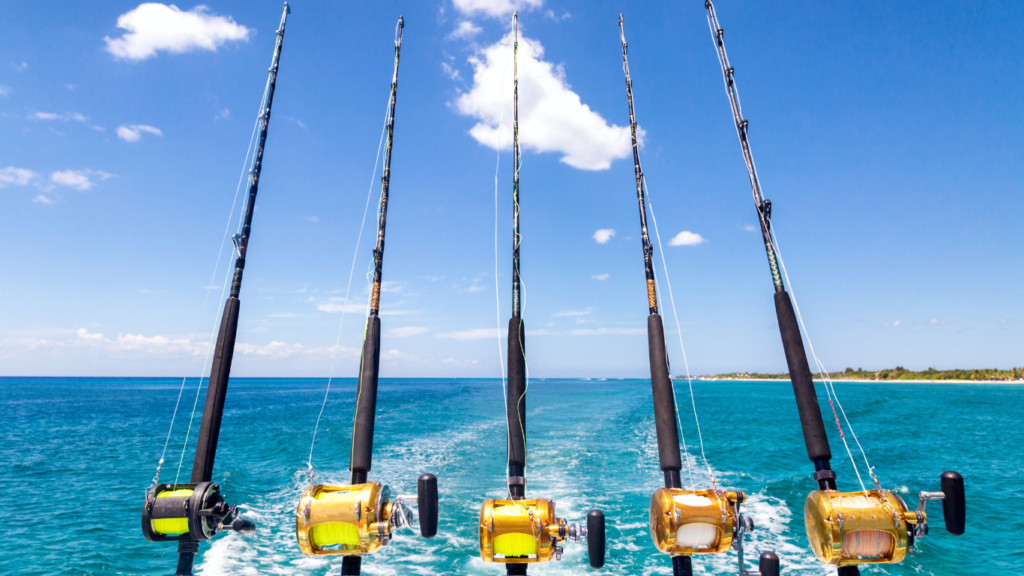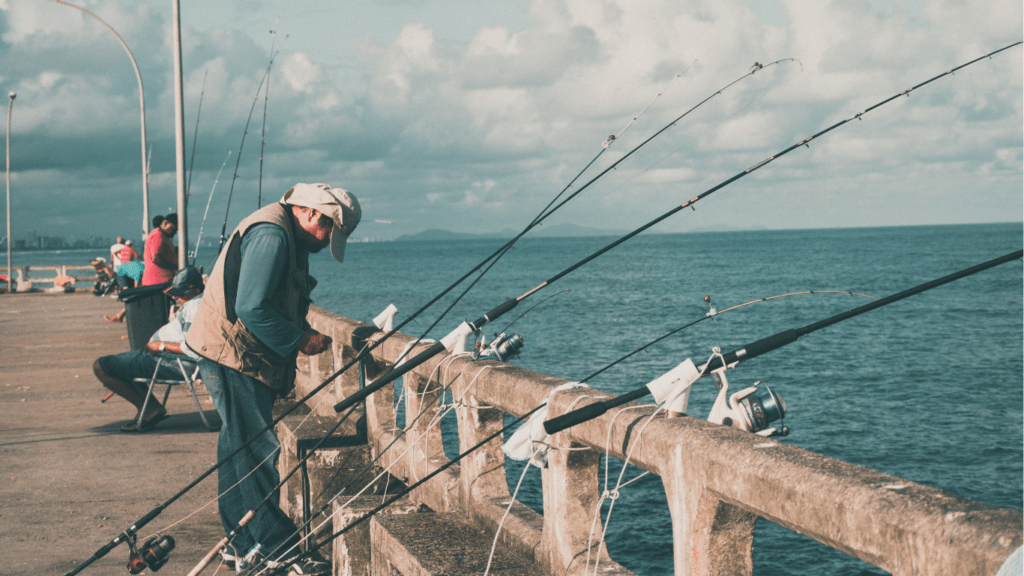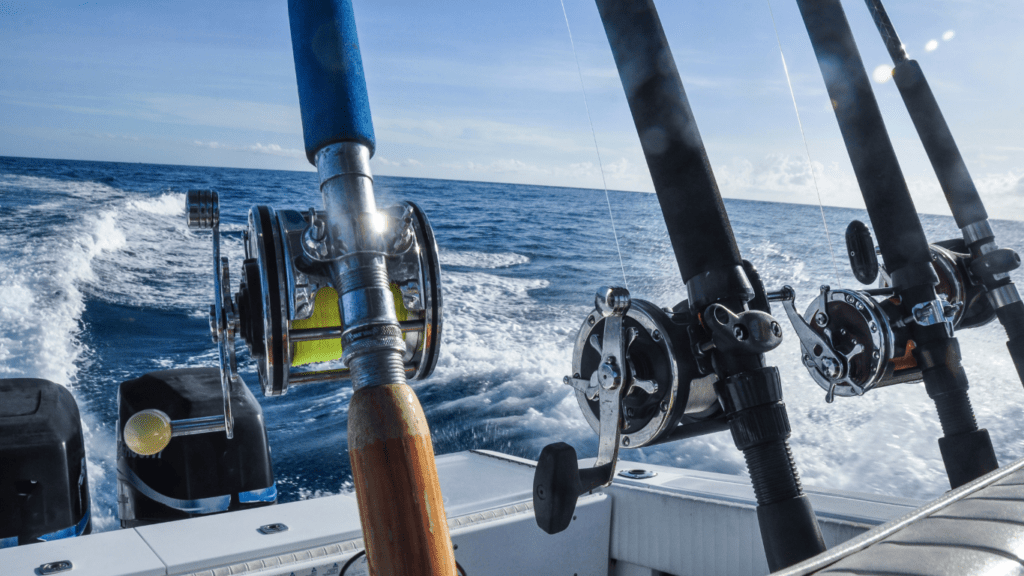What Is Rod Power and Action?
Rod power and action describe a fishing rod’s strength and flexibility. These characteristics determine how the rod performs under tension and influences casting, hookups, and fish handling.
Understanding Rod Power
Rod power refers to the rod’s strength or resistance to bending. It’s categorized into ratings like light, medium, and heavy. For example, light rods excel in finesse fishing or targeting small species like trout, while heavy rods handle big lures or fish like bass. Matching rod power with the lure weight and target species ensures better control and efficiency.
Grasping Rod Action
Rod action measures where the rod flexes along its length. Fast action rods bend near the tip, providing quick hooksets and sensitivity. Moderate rods flex near the middle, offering versatility for treble hook baits or crankbaits. Slow action rods bend throughout and are ideal for delicate presentations like live bait. Identifying the suitable action depends on fishing techniques and gear preferences.
Importance Of Matching Rod Power And Action
Matching rod power and action enhances precision and efficiency during fishing. Using the wrong combination can reduce performance and lead to missed opportunities.
How It Impacts Performance
Properly matched power and action ensure optimal lure control and hooksetting. Rod power directly impacts the rod’s ability to handle specific lure weights and fish sizes. For example, pairing a heavy-power rod with lightweight lures can make casting less effective, while a light-power rod struggles with heavy lures or large species.
Rod action determines how quickly the rod responds to movement. Fast action rods improve sensitivity and enable quicker hooksets, making them ideal for techniques like jigging. Moderate or slow action rods allow better flexibility, making them suitable for crankbaits or live bait where smooth presentations matter. The right match improves precision and reduces energy wasted on adjustments.
Common Mistakes When Choosing
- Ignoring the lure weight and target species is a common error.
- Using mismatched power ratings often leads to poor casting distance or broken rods when stressed beyond capacity.
- Anglers using light rods for heavy lures, which disrupts accuracy.
- Relying solely on rod length while neglecting action is another issue.
- Some anglers choose longer rods expecting higher performance but overlook whether the action suits their fishing style. For example, a long, fast-action rod may not provide the control needed for trolling or delicate presentations.
Types Of Rod Power And Their Uses

Rod power describes the rod’s resistance to bending under load, ranging from ultralight to heavy. Each power rating serves specific fishing scenarios based on lure weight and target species.
Ultralight to Heavy Power Options
Rod power spans several categories, including:
- ultralight
- light
- medium-light
- medium
- medium-heavy
- heavy.
Ultralight rods excel for small fish like panfish or trout using lightweight lures under 1/16 oz. Light and medium-light rods perform well for finesse fishing techniques, such as drop shots or small jigs, where precision matters.
Medium rods offer versatility, handling both smaller and moderately-sized fish like walleye, with lures up to 1/2 oz. Medium-heavy rods suit larger freshwater species like bass, ideal for spinnerbaits or soft plastics. Heavy rods handle big fish or heavy lures, often used for flipping jigs or targeting species like pike or catfish.
Finding the Right Power for Your Target Fish
Target fish size and lure specifications guide power selection. For smaller species or techniques requiring sensitivity, ultralight or light rods are key. For bass or similar fish, medium or medium-heavy rods balance power with control. Heavy rods dominate when targeting large predators or casting heavy lures above 1 oz. If power isn’t correctly matched to fish size and lure weight, casting efficiency, hook setting, and fighting fish become more challenging.
Rod Action Categories And Applications
Rod action directly impacts lure presentation, casting distance, and hooksets. Understanding the different action types helps me tailor my rod choice to specific fishing scenarios.
Extra Fast, Fast, Moderate, And Slow Actions
Extra fast action rods bend only at the tip. They’re ideal for techniques requiring quick hooksets, such as jigging or fishing with soft plastics. Fast action rods also flex near the tip but offer more bend, providing a balance of sensitivity and casting distance for techniques like Texas rigs or spinnerbaits.
Moderate action rods bend around the rod’s midsection. These work well for crankbaits and other lures requiring a combination of casting distance and controlled lure action. Slow action rods flex throughout their length, which is ideal for small lures or finesse presentations like lightweight trout rigs.
Choosing the Best Action for Specific Techniques
Matching rod action with my fishing technique ensures efficiency. For topwater lures, I rely on fast action rods, as their limited flex supports precise movements. Moderate action rods excel in scenarios requiring accuracy and smoother lure retrieval, like crankbait fishing. Slow action rods suit situations where line tension needs to be maintained consistently, such as trolling.
Considering the species and technique before selecting action ensures I get better lure control, a stronger hookset, and an overall improved fishing experience.
Tips For Picking the Right Rod for Your Style
Selecting the ideal rod depends on aligning it with your fishing style, target species, and technique. Understanding these factors ensures a more enjoyable and successful fishing experience.
Factors to Consider: Species, Technique, and Conditions
Start by identifying the species you’re targeting. For smaller fish like trout or panfish, I rely on light-power rods, which provide better control over finesse lures. For larger species like bass or pike, I opt for medium to heavy-power rods, as they handle bigger lures and stronger fish effectively.
Match your rod action to the technique you’ll use. A fast-action rod works well for techniques requiring precise hooksets, like jigging or worm fishing, while moderate-action rods are better for moving baits like crankbaits or spinnerbaits. Pay close attention to local conditions. I choose slow-action rods in calm waters for delicate presentations and fast-action rods in windy conditions for better casting control.
Balancing Sensitivity and Strength
Sensitivity determines how well you can detect bites, while strength impacts your ability to handle heavier fish. For high sensitivity, I prefer fast or extra-fast action rods, especially for techniques like drop-shotting or fishing in cover, where detecting subtle bites matters. To balance strength, I use heavier rods that resist bending when fishing for larger fish, ensuring I can fight and land them without risking rod failure.
The balance between sensitivity and strength is critical for maintaining performance. A heavy-power rod paired with fast action offers strong hooksetting while preserving lure feel, making it adaptable for various fishing scenarios.





